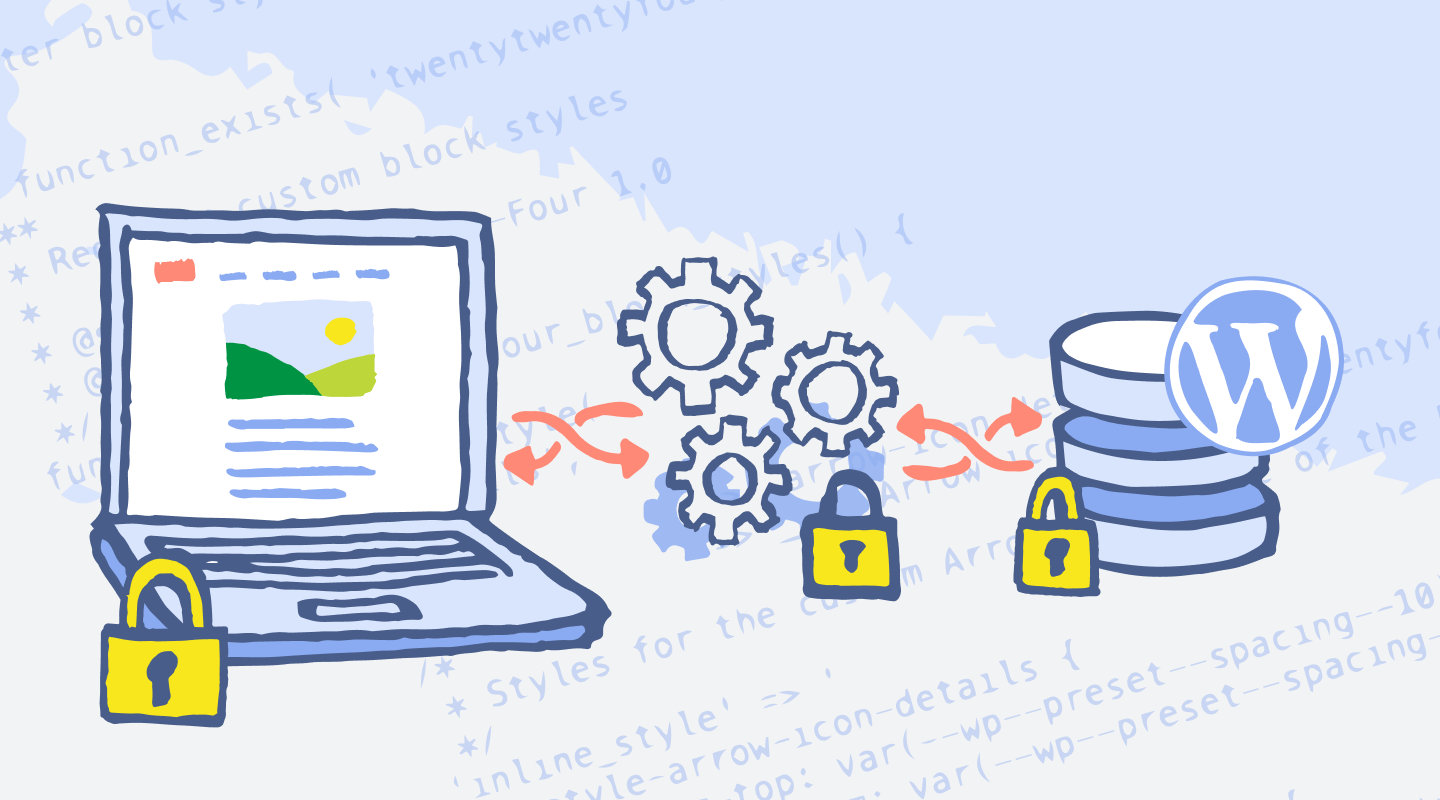
Understanding Single Page Applications: When to Use Them and Frameworks Overview
Introduction to Single Page Applications
Single Page Applications (SPAs) have become increasingly popular in modern web development due to their unique approach to user experience and efficient management of web resources. Unlike traditional multi-page applications, which refresh the entire webpage upon user interaction, SPAs load a single HTML page and dynamically update content as users interact with the application. This leads to a smoother user experience, as it eliminates the need for multiple page reloads. The core characteristics of SPAs include the ability to load content dynamically, utilize bandwidth efficiently, and provide a more fluid and engaging user interface.
At the heart of Single Page Applications is a set of foundational technologies. These primarily include HTML for structuring content, CSS for styling, and JavaScript for functionality. JavaScript frameworks and libraries, such as React, Angular, and Vue.js, have further enhanced the development of SPAs by providing tools and components that streamline the process of building dynamic web applications. The use of these technologies allows developers to create responsive applications that can handle user interactions seamlessly, keeping the user engaged.
One of the distinguishing factors of SPAs is their reliance on client-side routing, which permits the app to manage navigation without necessitating server requests for each page. This not only speeds up navigation but also minimizes server load, leading to optimized performance. In contrast, traditional multi-page applications involve frequent server requests, causing a noticeable lag during user navigation. The shift towards SPAs reflects a growing demand for enhanced performance and user-centric design in web applications, making them suitable for a variety of applications, particularly those requiring high interactivity.
Benefits of Single Page Applications
Single Page Applications (SPAs) have gained considerable traction in modern web development, primarily due to their numerous advantages over traditional multi-page applications. One of the most significant benefits is improved performance. By loading only the necessary resources once and dynamically updating content without reloading the entire page, SPAs drastically reduce the time taken to display information. For instance, platforms like Gmail allow users to navigate through their emails without experiencing the lag that usually accompanies traditional page refreshes.
Faster navigation is another key aspect that enhances user experience in SPAs. When a user interacts with an application, they expect immediate feedback. SPAs achieve this by utilizing AJAX (Asynchronous JavaScript and XML) calls to fetch data in the background. For example, Facebook’s user interface enables users to scroll through news feeds seamlessly, retrieving data as needed without the burden of constant page reloads, thereby creating a more engaging experience.
Moreover, SPAs promote a more cohesive and definitive user experience. As users remain on a single page, they can engage with the application more fluidly, reducing the friction often felt when transitioning between pages. This is particularly beneficial for applications requiring constant interactions, such as online forms or complex workflows. Additionally, the reduced server load is notable; since SPAs require fewer requests to the server, they decrease bandwidth consumption and improve overall responsiveness. This efficiency is advantageous for applications with high traffic, as evidenced by tools like Trello that operate smoothly even under heavy user interaction.
In conclusion, the benefits of Single Page Applications are evident in their capacity to enhance performance, accelerate navigation, elevate user experience, and minimize server load. These factors, combined with a refreshingly interactive design, make SPAs an appealing choice for developers and users alike.
When to Use Single Page Applications
Single Page Applications (SPAs) are increasingly favored in scenarios that demand high interactivity and seamless user experiences. One of the primary conditions for utilizing SPAs is when developing real-time applications. These applications, such as chat services or collaborative tools, require constant interaction and updates without the need for full-page reloads. The fluidity of SPAs offers users a more engaging experience, as they can receive notifications and see changes in real-time without disruption.
Moreover, SPAs are highly effective for dashboards and data visualization applications. These types of projects often require dynamic content and the manipulation of data in response to user actions. SPAs excel in providing quick and intuitive data displays, which are crucial for users needing immediate insights or analytics. The architecture of SPAs allows for rapid requests and responses, leading to smoother performance when compared to traditional multi-page applications.
Social networking sites also benefit greatly from the SPA model. Features such as profile updates, news feeds, and messaging systems can be implemented using SPAs to create a cohesive user experience. Interaction with various elements can occur without page refreshes, significantly enhancing user retention and engagement. Additionally, dynamic content loading ensures that users can browse through feeds effortlessly, which is essential in maintaining active community interactions.
Furthermore, e-commerce platforms can leverage SPAs to enhance their front-end interactions. Users benefit from quick product searches, instant updates to shopping carts, and streamlined checkout processes, all of which improve conversion rates. The improved user experience provided by SPAs addresses the specific needs of consumers looking for efficiency and ease while navigating online stores.
In summary, SPAs are particularly well-suited for projects that require high interactivity, real-time updates, and enhanced user experiences, making them an ideal choice in various contexts such as real-time applications, dashboards, social networking sites, and e-commerce platforms.
When Not to Use Single Page Applications
While Single Page Applications (SPAs) offer distinct advantages in terms of user experience and performance for certain types of web applications, there are specific scenarios where they may not be the most appropriate choice. One significant concern is performance, particularly when managing large data sets. In situations where users need to handle complex data manipulation or extensive lists, the client-side rendering model of SPAs can lead to slower performance and increased load times. The initial load of a large application can overwhelm the browser, resulting in a laggy experience that detracts from the user satisfaction that SPAs are meant to provide.
Another essential factor to consider is Search Engine Optimization (SEO). Conventional SPAs often struggle with SEO because they rely heavily on JavaScript to generate content dynamically. Search engines may find it challenging to index such content effectively. Therefore, if your application demands strong organic search visibility, particularly in competitive niches, relying solely on an SPA might hinder your efforts to achieve high search engine rankings. In these cases, traditional multi-page applications or server-rendered content might present a more suitable option.
Moreover, the complexity of development can pose challenges with SPAs. The architecture of an SPA can become quite intricate, especially when incorporating features such as state management and routing, which may necessitate the use of additional libraries or frameworks. The learning curve for developers unfamiliar with these tools can be steep, potentially leading to longer development times and higher costs. If project timelines are tight and team expertise is limited, a more straightforward application architecture may be advisable.
Altogether, recognizing the limitations and potential implications of adopting an SPA is crucial in making informed decisions about project development. Understanding these warning signs can help assess whether a Single Page Application is truly the right fit for a given project.
Key Frameworks for Single Page Applications
Single Page Applications (SPAs) have transformed web development, and numerous frameworks have emerged to facilitate their creation. Among these, React, Angular, Vue.js, and Ember.js stand out due to their unique features and community support.
React, developed by Facebook, has gained immense popularity due to its component-based architecture, which allows for the easy creation of interactive user interfaces. One of its core strengths lies in the virtual DOM, which optimizes rendering by only updating parts of the interface that change. While React provides flexibility and is ideal for large applications, it may require additional libraries for state management, which can complicate development for beginners.
In contrast, Angular, backed by Google, is a comprehensive framework that offers a complete solution for building SPAs. It uses TypeScript, enhancing code maintainability, and comes with a strict structure, which is beneficial for larger teams. Angular’s two-way data binding simplifies the synchronization between the model and the view, making it convenient for dynamic applications. However, the steep learning curve may present challenges for newcomers.
Vue.js strikes a balance between React’s flexibility and Angular’s robustness. It is known for its ease of integration into projects, making it an excellent choice for new developers. Vue.js features a reactive data-binding system and a component-based architecture, similar to React, but is less opinionated, allowing developers to choose their structure. This flexibility can lead to uneven code quality if not managed properly.
Finally, Ember.js offers an opinionated framework designed for ambitious web applications. It provides a robust convention over configuration approach, which allows developers to follow a structured methodology. While Ember.js comes with a steep learning curve and can be heavy for smaller projects, it excels in building large-scale applications efficiently, thanks to its powerful built-in features and strong community support.
In conclusion, selecting the right framework for building Single Page Applications depends on various factors, including project requirements, team expertise, and preferred development style. Each of these frameworks has its own strengths and weaknesses, enabling developers to choose the most suitable option for their needs.
Comparative Analysis of SPA Frameworks
Single Page Applications (SPAs) have gained immense popularity due to their enhanced user experience and seamless navigation. However, selecting an appropriate framework for building an SPA can be a daunting task. This analysis will compare popular SPA frameworks—React, Angular, Vue.js, and Svelte—based on key factors such as performance, learning curve, community support, and scalability.
Performance is a crucial aspect when developing SPAs. React is renowned for its virtual DOM implementation, which optimizes updates to the user interface, resulting in high performance. Angular, while heavier, offers a well-structured framework that can lead to efficient performance when built correctly. Vue.js strikes a balance, providing exceptional speed with a lightweight footprint, while Svelte takes a unique approach by compiling components at build time, allowing for impressive performance even in complex applications.
The learning curve associated with these frameworks varies significantly. React offers a flexible, component-based architecture, yet its expansive ecosystem can overwhelm beginners. Angular presents a steeper learning curve due to its dependency injection and complex concepts, making it less accessible for newcomers. Conversely, Vue.js is often praised for its straightforwardness and gentle learning curve, making it suitable for developers of all skill levels. Svelte stands out as well; its syntax is uncomplicated, appealing particularly to those who may find traditional frameworks cumbersome.
Community support plays an essential role in choosing a framework, as robust community backing can facilitate problem-solving and resource accessibility. React boasts one of the largest communities, providing ample resources and tutorials. Angular, being a Google-backed framework, also enjoys strong support. Vue.js has a passionate community, while Svelte, though smaller, is rapidly growing. Lastly, scalability is vital for future-proof applications, with Angular and React often being chosen for their scalability, while Vue.js and Svelte are becoming increasingly capable as they evolve.
Best Practices for Developing Single Page Applications
Building effective and efficient Single Page Applications (SPAs) demands adherence to several best practices that enhance performance, maintainability, and user experience. A primary consideration is establishing clear coding standards. Consistency in code style not only improves readability but also facilitates collaboration among developers. Utilizing established frameworks and libraries such as React, Angular, or Vue.js is advisable, as they provide robust architectures and pre-built components that streamline the development process.
Optimization techniques play a crucial role in maximizing SPA performance. Developers should prioritize fast load times and smooth transitions between sections. This can be achieved through asset optimization, which entails minimizing and compressing JavaScript, CSS, and image files. Implementing lazy loading can further enhance performance by deferring the loading of off-screen content until it is required. Another effective strategy involves the use of caching mechanisms, such as service workers, to improve response times and reduce server load.
State management is another essential aspect to consider when developing SPAs. As user interactions generate dynamic content, managing application state becomes critical. Tools such as Redux or Vuex can help maintain a predictable state across the application, enabling developers to track changes and debug more efficiently. Additionally, a clear understanding of the application’s data flow is necessary to avoid common issues like the “prop drilling” phenomenon.
Lastly, testing strategies should not be overlooked in the development process. Comprehensive testing, including unit tests, integration tests, and end-to-end tests, ensures the application functions as intended and maintains high quality. Tools such as Jest, Mocha, or Cypress can facilitate testing and enhance code reliability. By adhering to these best practices, developers can create well-functioning SPAs that provide a smooth user experience and are maintainable over time.
Case Studies of Successful Single Page Applications
Single Page Applications (SPAs) have significantly transformed how businesses interact with their customers, providing seamless user experiences across various industries. One notable example is Gmail, a leading email platform developed by Google. By adopting a single page architecture, Gmail allows users to access their emails and navigate through different functionalities without the need for full page reloads. This provides a faster and more responsive experience, influencing millions to shift from traditional email interfaces to SPAs, resulting in enhanced user engagement and retention.
Another exemplary case is Spotify, a music streaming service that utilizes SPA technology to offer its users a smooth and dynamic interface. By employing a single page application framework, Spotify delivers personalized content and customized playlists with minimal loading time, thereby significantly increasing user satisfaction and continuity of use. This approach has positioned Spotify as a frontrunner in the competitive music streaming market, highlighting the effectiveness of SPAs in improving business outcomes.
Furthermore, the online retailer Walmart has successfully implemented a SPA framework on their eCommerce platform. Walmart’s decision to convert parts of their website into a single-page application was prompted by the need to enhance the shopping experience. The transition led to faster browsing, quicker load times, and a more intuitive navigation structure that mimics the in-store experience. As a result, Walmart reported increased sales and customer satisfaction rates, demonstrating the profound impact that SPAs can have on operational success.
In the healthcare sector, Healthline stands out as a successful SPA example. The website’s architecture allows users to access vast amounts of health-related information rapidly, enhancing user engagement. By simplifying navigation and improving the speed at which users can find relevant articles, Healthline has created a valuable resource for its audience, further emphasizing how single page applications can effectively address specific industry needs.
Future Trends in Single Page Application Development
As web technologies continue to evolve, Single Page Applications (SPAs) are undergoing significant transformations to remain relevant and efficient. One notable trend is the integration of Progressive Web Apps (PWAs). PWAs combine the best aspects of mobile applications and web pages, providing a seamless user experience regardless of device. By leveraging modern web capabilities, SPAs can benefit from enhanced performance, offline access, and improved engagement through push notifications. The adaptability of PWAs ensures that SPAs can be more dynamic, catering to diverse user preferences and behaviors.
Another emerging trend in SPA development is server-side rendering (SSR). Traditionally, SPAs operate primarily on the client side, which can lead to issues such as slower initial loading times and search engine optimization challenges. By implementing SSR, developers can render content on the server, delivering fully populated pages to users before the JavaScript takes over. This not only improves performance but also enhances SEO, making SPAs more accessible to search engines. As webmasters and developers alike recognize the value of SSR, a shift toward this approach in SPA design is becoming increasingly prominent.
The rise of API-first architectures also plays a critical role in shaping the future of SPAs. With the growing need for components that can communicate with various back-end services, an API-first approach empowers developers to create scalable and maintainable applications. By decoupling the front-end user experience from back-end systems, SPAs can easily integrate with microservices and third-party APIs. This flexibility enables organizations to innovate faster, responding efficiently to changing market demands while ensuring a rich user experience.
In conclusion, as Single Page Applications continue to evolve, integrating PWAs, server-side rendering, and API-first architectures will profoundly impact their development. Staying abreast of these trends will enable developers to create more efficient, responsive, and user-friendly web applications, aligning with the future of digital experiences.







